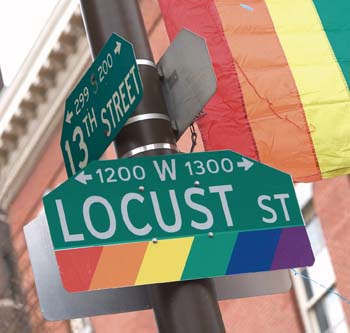Is it possible to gentrify the Gayborhood? It might surprise you that the word itself has been used since the Roman Empire, but generally has meant the same thing through the ages. Here is the current definition on Wikipedia:
“Gentrification is the process of changing the character of a neighborhood through the influx of more affluent residents and businesses. It is a common and controversial topic in urban politics and planning. Gentrification often increases the economic value of a neighborhood, but the resulting demographic displacement may itself become a major social issue. Gentrification often sees a shift in a neighborhood’s racial or ethnic composition and average household income as housing and businesses become more expensive and resources that had not been previously accessible are extended and improved.”
That is happening today all over the country. We’ve all seen the start of it but might have attributed it to something else. Most believe it began with the closing of gay bars and clubs in populated LGBTQ+ neighborhoods around the country, and yes that is part of it. Long ago, LGBTQ+ neighborhoods were not where most mainstream Americans would want to live. But as equality has become “more popular,” it became fashionable to live in an LGBTQ+ neighborhood. It was so popular to the point that developers saw a potential for profit, and eventually took over properties. They usually started with lots, bars and older buildings, ultimately building large apartment complexes and condos.
The best example I can see nationwide is what is currently happening in Philadelphia. Ten years ago, the Gayborhood was slightly above middle class in housing prices. The community dmhFund realized that those who made up our first openly LGBTQ+ generation — seniors — might get displaced and needed secure housing. We built the John C. Anderson Apartments, an affordable apartment building for LGBTQ+ seniors, which former President Barack Obama championed. That building created a resurgence in the neighborhood, winning numerous national architecture awards.
The success of that building can be seen in the rise of property value, including the William Way LGBT Community Center a block away, but it also brought developers who had little use for our community. As their buildings went up, they didn’t invest in the Gayborhood or its inhabitants. And worse, they did no outreach to obtain LGBTQ+ residents. They only promoted their buildings to mainstream audiences. A boarded up building at that time across from a gay bar called Uncle’s was the first to be developed. A second was a block from that community center. And the third actually resulted in the tearing down of 12th Street Gym, an LGBTQ+ gym which had a mural of the late local LGBTQ+ activist Gloria Casarez on its wall. The 20-story building replacing the latter brings no architectural character to the Gayborhood itself, and there seems to be no plan to replace the mural or any aspect of the community it erased.
When I pressed this issue with a developer of one of those 20-plus story buildings and told him he needed to write a large check to the community center, he said he’d think about it. My response was, “Maybe your lack of responsibility to the neighborhood you’re developing in is why your building now stands 75% empty.”
With all these new buildings opening and seeking mainstream residents, it is certain to change the character of what was a very active neighborhood. In Philadelphia, that has created new mini LGBTQ+ neighborhoods in places like South Philadelphia and a neighborhood called Northern Liberties. I have one question: Is this success in our movement for equality, or exploitation?
